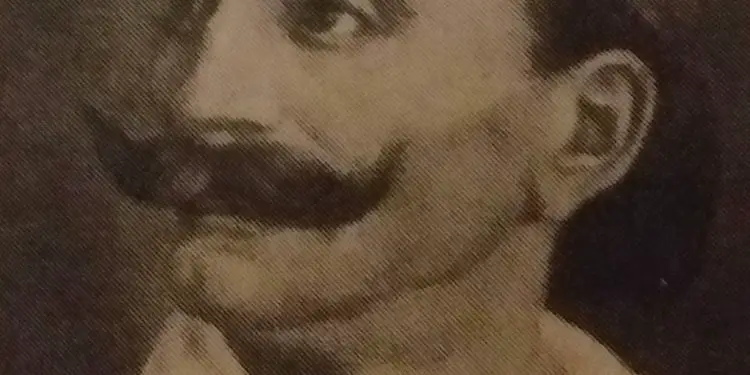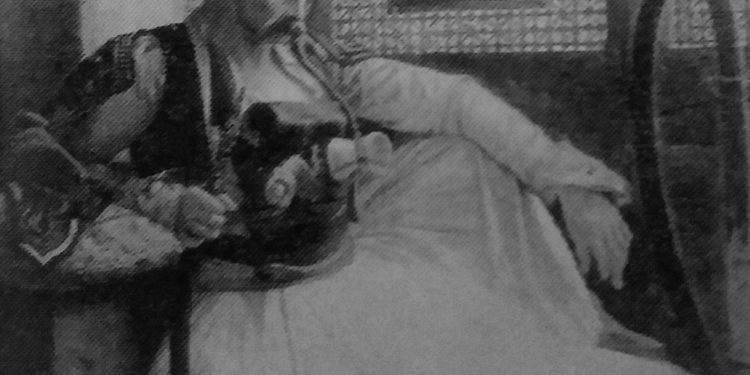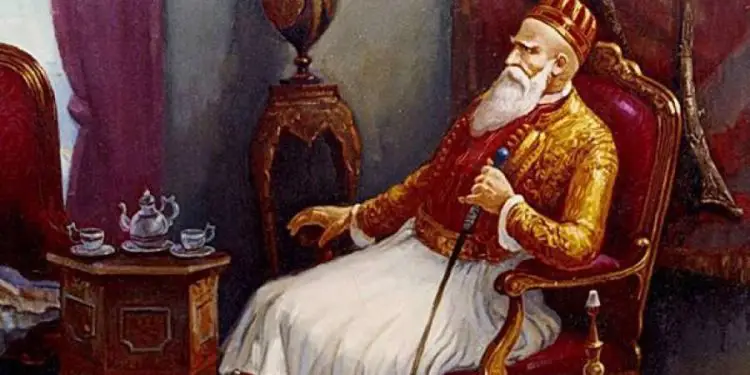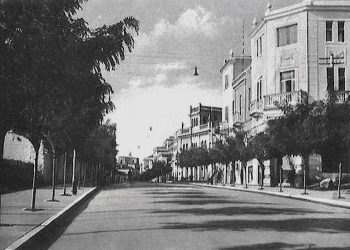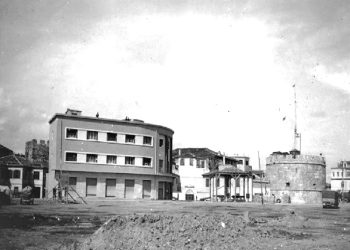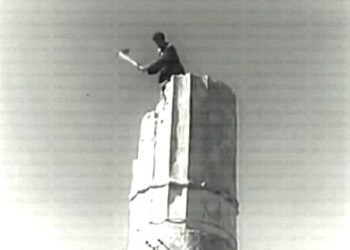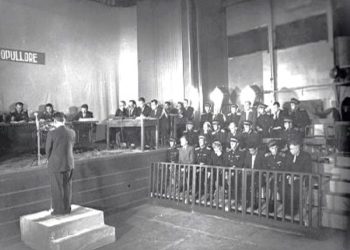Dashnor Kaloçi
Memorie.al/ “One of the most prominent and most mentioned men of the Xhavella tribe, where our Tasho family comes from, was also Kiço Xhavella, who managed to become the Prime Minister of Greece. In the many researches I have done for almost three decades for the history of our family, I have found many writings and studies made by local and foreign authors, dedicated to the famous Kiço Xhavella, who was born in 1801 in the village Sul and grew up on the island of Corfu, where his ancestors had emigrated. In 1820 he returned to Sul, after the agreement that Xhavellat had made with Ali Pasha Tepelena and at that time at the age of 19, he received the title of Captain. After this Kiço Xhavella joined Marko Boçari and fought together with him and as a result of the fame he gained in those wars, in 1835, King Othon appointed Kiço as his adjutant, promoting him to colonel and inspector of General of the Army. After the death of the Minister of Defense of Greece, Karaiskapi in 1844, Kiço Xhavella served as prosecutor and chief general, while in 1847-’48, he was elected to the high post of Prime Minister of Greece “. The man who speaks and testifies for the first time for Memorie.al, is Anesti Tasho from Korça, (by profession mechanical engineer) who tells the whole story of the first v4e of his tribe, the famous Xhavellave of Sul, where men came from prominent who made a great name in the history of Greece and beyond in the Balkans, whose descendants today live in Albania and are known by the surname Tasho.
Sul’s Javelins in Greece
According to the suliot scholar, Niko Zhagu, the suliotes have been known for several centuries and some of them have also participated in the Guard of our National Hero, Gjergj Kastrioti Skënderbeu. From that time until the nineteenth century, they remained in Sul as lords of that province. Among the most mentioned and prominent men that that Albanian family has produced over the centuries, were Foto and Kiço Xhavella, who in the first years of the XIX century gave a valuable contribution to the victory of the Greek revolution of 1821. According to the studies done by Anesti Tasho, the province of Sul lies in a very rugged mountainous area in the heart of the mountains Murga, Zabruku, Kurila, etc., where the river Akreon originates. That province is located about 45 km. South of the city of Ioannina, about 30 km from the Ionian Sea. The whole province has a length of 42 km. And width of 26 km., occupying an area of 1100 km. square. At the beginning of the 18th century, the population of Suli reached up to 7000 inhabitants and the power there was in the hands of the Council of Suli, which consisted of 47 men, from the heads of the most famous tribes of the country, such as: Xhavellat, Bocarë , Ohrojkat, Nikajt, Dangëllinjtë, Fotomarajt etc. The council had its stamp with the inscription “Council of the Fatherland”, while the community of Suli which was self-governing as independent from Istanbul, was militarily organized and kept about 2500 soldiers ready, but when it was attacked by the Turks, almost all the suljots, men and women, joined the army. Dora d’Istria has called Sulin a Republic, because since the 17th century, a kind of civic republic had been formed there.
Xhavellat against Ali Pasha Tepelena
A very interesting part of the history of the Xhavella (Tasho) family is that which belongs to the period of the rule of Ali Pasha Tepelena, where the Xhavellas fought against him, not accepting submission from him. According to studies by Anesti Tasho, in the spring of 1722, Ali Pasha Tepelena wrote several letters to the captains of Sul, promising them land and offices, on condition that they enter his service. Some of the captains of Sul did not trust the promises of the old Pasha of Ioannina, and by refusing the fat offices and salaries, refused to be placed under his rule. Only Llambro Xhavella, with 17 men from his tribe, agreed to go and talk to Ali Pasha Tepelena about the offers he had made to them through the letters he had sent separately to almost all the captains of Sul . But when the sultans rejected all his offers and refused to make any agreement with the old Pasha of Ioannina, he arrested Llambro Xhavella, threatening him to accept his rule. But then he let him go, holding Llambros hostage, his 15-year-old son, Foto Xhavella. When Llambro returned to his people, they remembered that he had been put in the service of the old Pasha and had been paid by him, as he had left his son and his people to him. But when he reached the Bocars, Llambro found other captains waiting for his word. After that, in their presence, he wrote a letter which he immediately sent to the old Pasha, where among other things he wrote: “I am glad that I am lying to a liar, that my son will die, but I, Xhavella, will not to enter and without taking blood. “I have a young wife, full of hope to renew the heir who is keeping me there.” Likewise, in that very surprising letter to the old Pasha of Ioannina, Llambro Xhavella wrote that: Ali’s foot would never tread on the mountains of Sul. After that, in the spring of 1782, Ali Pashai sent to Ioannina all the Sulian captives and launched about 1500 military forces to subdue Sulin. But after several attacks and counterattacks, Ali Pashai who was shy in his palaces in Ioannina, for fear of any possible revenge of the suljots and inability to subdue them, he was forced to propose some conditions to them for making peace with them. The conditions that Pasha, the elder of Ioannina, offered to the Suljots, consisted of: leaving them on their lands (including the Derviçan valley), paying a ransom for them, as well as releasing and returning Foto Xhavella to his family, conditions which Xhavelalt immediately accepted, considering them as: capitulation of Ali Pasha.
Prime Minister of Greece
One of the most prominent and most mentioned men of the famous Xhavella tribe was Kiço Xhavella, who managed to become the Prime Minister of Greece. In this regard, Anesti Tasho testifies: “In the many researches I have done for almost three decades for the history of our family, I have found many writings and studies done by local and foreign authors dedicated to Kiço Xhavella, who achieved to become the Prime Minister of Greece “. Also, a short biography of Kiço Xhavella was written by the researcher Arben Llalla. According to them, Kiço Xhavella was born in 1801 in Sul and grew up on the island of Corfu where the first of the tribe had emigrated. In 1820 he returned to Sul after the agreement that Xhavellat had made with Ali Pasha and at that time at the age of 19, he received the title of Captain. After that he went to Italy to get a quantity of weapons and when he returned from there, Ali was killed and the Suliots had left Suli for the second time. At that time, Kiço Xhavella joined Marko Bocar and fought with him. In 1835, King Othon appointed him as his adjutant making him under general and general overseer of the army. After the death of the Minister of Defense of Greece, Karaskaki (another prominent Albanian), in 1844, Kiço Xhavella served as prosecutor and chief general, while in the years 1847-‘48 he took the post of Prime Minister of Greece. Kiço Xhavella died in Mesolongj in 1855 and on the same day, foreign generals attacked the Turkish army in Falira, near Athens, but were badly defeated. This greatly disappointed Commander Kiço, because it was done without asking him, and on the battlefield about 1,500 fighters had been killed, almost all of them suljots. When Greece gained independence in 1829, there were no more than 200 Suli warriors left, and the province of Sul, which had been free and independent for more than 350 years, ceased to exist and remained under the Turkish Empire. The declaration of independence of Greece, found the Sulians scattered in the islands of the Ionian Sea, in northwestern Greece and partly in Albania, and elsewhere.
Genealogy of the Tasho family
During the research and studies on the history of the Xhavella family, Anesti Tasho also dealt with the genealogy of his family. Regarding this, he says: “To make the genealogy of this family so big in several generations, it took me many years of work. I have researched in many families where there were elderly men of my tribe or other suliots, both in Leskovik and its surroundings and elsewhere. I also went to: Konica, Florina, Ioannina and Athens. From all the evidence I have gathered from them, it turns out that our ancestors and some other suliote families, came to Meles in Leskovik, around 1828-1831, when Captain Zylyftar Poda, after the war and resistance he made in Meles to the forces the Ottomans, accepted the terms of the peace, which stated that: any of his supporters could stay in Meles. Since Zylyftari had a lot of sympathy for the Suliots, who in 1819–1822, joined Ali Pasha in the war against the Ottomans, created the conditions for them to stay and settle at the foot of Mount Melesin, very close to Leskovikut. From the legends and testimonies that have reached our days, it is said that: when Tasho Xhavella came to Meles, he brought with him his two small children, loaded in baskets (baskets) just like newborn kids. According to age, it is thought that the eldest of them was Christ, the first child to be born sometime around 1826. It is remembered that when someone tried to insult one of the members of our tribe, he would say to them: “Look, you who they have brought them in coffins like cattle”. Our ancestors often mentioned the friendship they had with Zylyftar Poda, and this friendship was maintained by future generations. According to the data, it turns out that in Melesin, initially settled six families, which somewhere around 1830, and built their houses, setting up economies. After that they became respected and honored people all over the province and lived together for 70 years. But around the years 1900-1910, almost all left Melesin and settled in Leskovik, Pobickë and Çereckë. Their houses remained cot and barn until 1943, when they were completely destroyed by the war that took place at that time. Even today in those areas there are ruins of those houses that best prove the existence of our tribe. Even today, the whole province calls these ruins “the Sarai of the Suliots”. As living evidence even today near Melesin, the church of St. Sotir is erected, to which the Suliots have also contributed. According to the testimonies of Gaqo Vasil Kristo Tashos (born 1896) and Vasil Leonidha Tashos (born 1908) given in 1985, in a small square behind the church of St. Sotir, is the tomb of Tashos. On the cross of the tomb was written: “Here rests the suljoti Tasho, Kiço Xhavella”. Unfortunately, this cross no longer exists. After World War II, when Leskovik was burned and destroyed, like many other inhabitants, the Suliots were dispersed. Some of them went to Korça and Tirana, while the rest went to Greece, settling in: Konica, Florina, Ioannina, Thessaloniki and Athens.
Tashot, reunite after 200 years
The Xhavella tribe and later Tasho, had as an early tradition that for every date on August 6, to gather in the Church of St. Sotir located on a rock of Melesin, where the feast in honor of the name of St. Sotir was commemorated. This pilgrimage, which had begun a long time ago, was stopped in 1966, when the communist regime of Enver Hoxha banned religious beliefs and began the demolition and destruction of places of worship. But after the ’90s, Anesti Tasho, thought of reviving that early tradition of his tribe. In this regard, he testifies: On August 6, 2003, we gathered there in the church of St. Sotir in Melesin, about 250 people from this tribe. Thus, after almost 200 years, from the time when our ancestors settled in Sul, we gathered again their descendants, who live in Albania, Greece, Australia, the USA, and some other countries “. After gathering and celebrating there in the Church of St. Sotir at the foot of Melesin, all as they were, about 250 descendants of the famous Javelins already known by the surname Tasho, crossed into Greek land and celebrated again in those lands where they had once settled their first./Memorie.al





